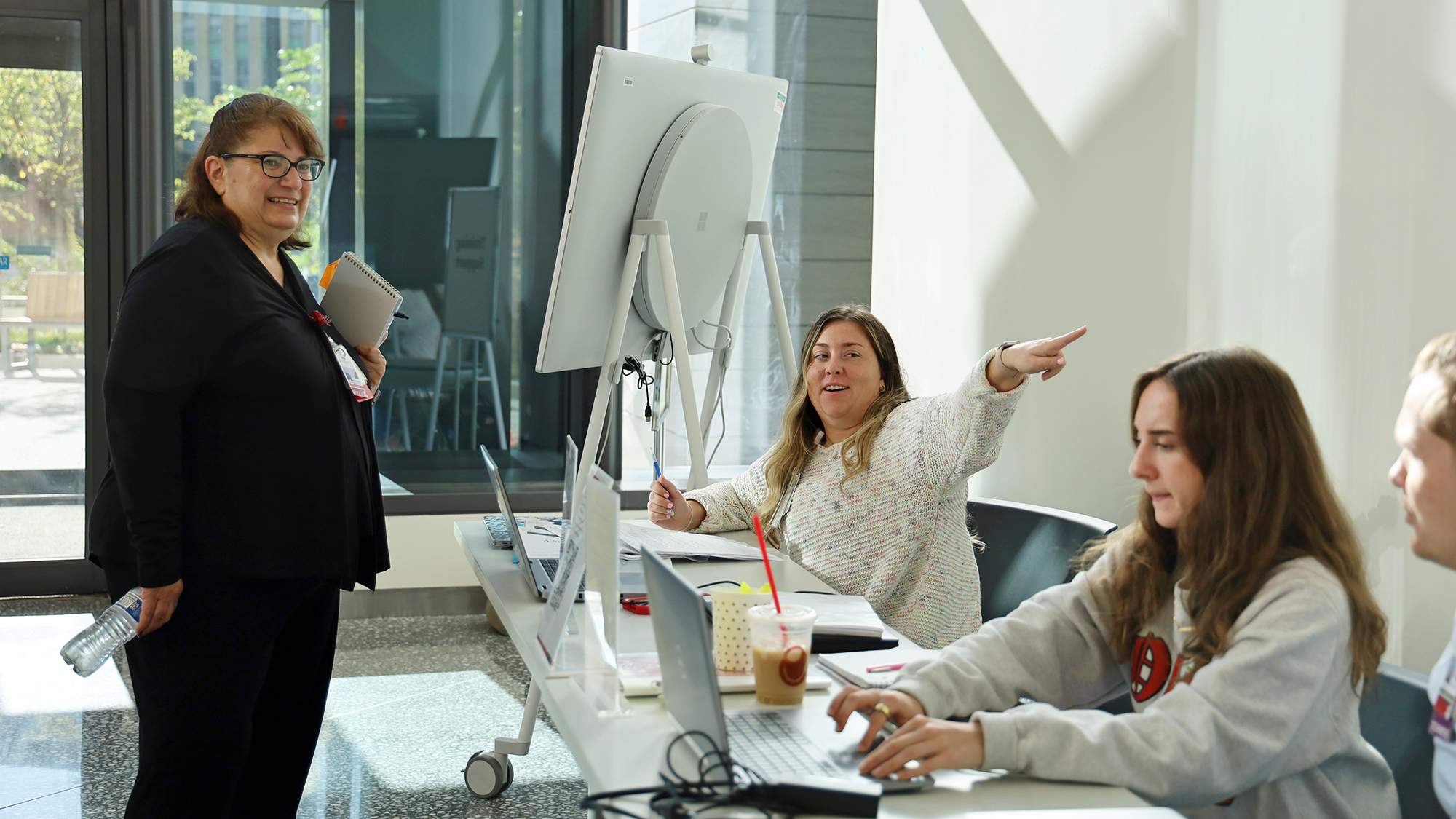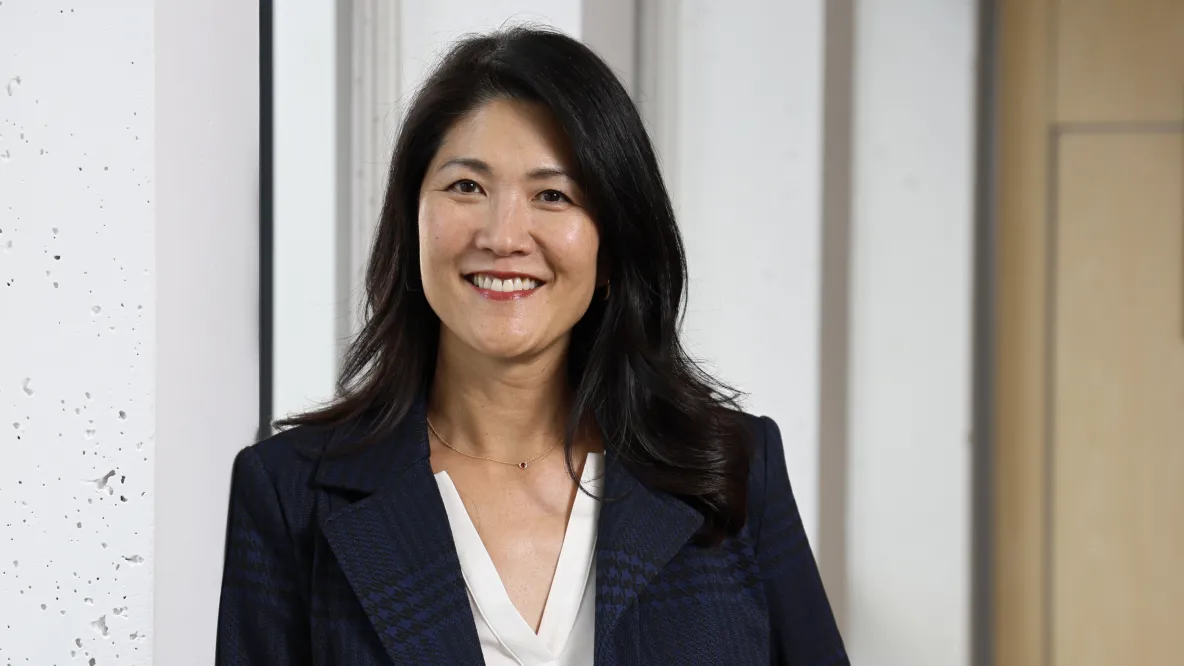Elijah Beard came to Ohio State because of the rich opportunities for hands-on learning. As a first-year student in the Master of Health Administration program, an elective focused on opening the new University Hospital tower goes beyond what he could have imagined.
The class — which will only be offered this academic year — gives 42 students the opportunity to assist with critical tasks ahead of the new facility’s planned opening in February. They are checking in 12,000 hospital staff for trainings in the new space, hanging temporary signage, developing strategies for daily communication and more as new needs arise over the coming months.
“Not many people get to be on the front end of a project like this...I’ve been trying to pay attention to all the little details, all the coordination that goes into a massive capital-undertaking project like this,” Beard said. “It’s really a once in a lifetime opportunity that I’m grateful to be a part of.”

Kelly Scheiderer, clinical assistant professor and MHA program director, said getting students involved in this massive undertaking presents a chance for them to explore evolving technology and systems they talk about in class.
“Most of the time facility projects are renovations, not building a new facility,” she said. “To open a new tower is extremely rare.”
This opportunity was made possible by the strong connections between the MHA program and the medical center, said Dennis Delisle, executive director of University Hospital, Brain and Spine Hospital and Richard M. Ross Heart Hospital. With both planned and ad hoc volunteer needs on the horizon, developing a credit-bearing opportunity for Ohio State students was a way for everybody to win.
As an administrative fellowship preceptor, Delisle said he spends a lot of time thinking about how to develop a leadership pipeline in health care administration.
“What we’re trying to do is get the students to not just learn in the classroom, but to experience what we do and how we do it in the real world and really help them better understand what’s out there so they can figure out what they may want to do over time,” he said.
At the start of the semester, Delisle told students: “Forget your resume — this is your interview.”
Students are being challenged to think critically about what they are seeing. Why do some employees miss their scheduled training? How should you respond if someone arrives late? If you were in charge, what would you do differently?
“That is really the academic part of this class,” said Karen Sharp ’93 MHA, director of inpatient tower activation. “They’re the ones who are seeing the barriers people are encountering to doing what we need them to do. They observe that and then start to problem solve and suggest some ways to work through some of those challenges.”
Sharp encourages students to take advantage of the opportunity to learn and interact with people in all types of roles that are critical for smooth hospital operations.
Acting as mock patients, the students will participate in three dress rehearsal events where employees will practice how they will move patients into the new facility. They will also operate elevators and fill other roles on opening day in February. Second-year MHA student Victoria Leonard said it’s exciting getting this inside perspective early in her career.
“Hospitals don’t open all the time,” she said. “It’s really awesome that myself and my classmates and then the first years just starting the program get this opportunity.”
Grant Mumper, a second-year MHA student, said it’s been an enriching experience to observe the complexity of this project and have a role in its success.
“There are so many different moving parts, it’s honestly an operational masterpiece,” he said.



